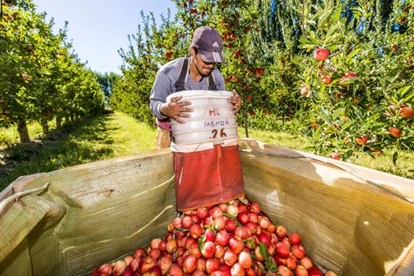Sustainable Impact Detectives: Evaluating SMEs

Knowledge
- In-depth knowledge of specific methodologies and frameworks
- Understanding of data requirements and collection methods
- Advanced knowledge in ESG reporting and communication
Skills
- Develop skills to evaluate different impact assessment methodologies and select the most appropriate one for a given SME.
- Ability to apply methodologies to real-world business scenarios
- Skills to develop a data collection plan aligned with the chosen methodology.
- Skills to collect relevant data from the SME, ensuring data quality and consistency.
- Skills to define and calculate key performance indicators (KPIs) and metrics to assess the SME's impact.
- Skills to evaluate an SME's overall impact across economic, social, and environmental dimensions.
- Gaining practical experience collaborating with SMEs.
Responsibility & Autonomy
- Independently research and choose the most suitable methodology for the selected SME.
- Autonomy in designing the data collection plan and selecting data sources.
- Independently develop and calculate key performance indicators (KPIs) and metrics to assess the SMEs impact
SMEs are increasingly under pressure to demonstrate their commitment to sustainability and comply with evolving ESG (Environmental, Social, and Governance) regulations. To navigate this complex landscape, SMEs require structured approaches to measure and report their social and environmental impact.
This involves identifying and implementing appropriate methodologies and frameworks that can effectively assess their sustainability performance, communicate their efforts to stakeholders, and ultimately contribute to a more sustainable future.
These tools help SMEs identify material ESG issues, set goals, and track progress. By adopting these tools, SMEs can not only meet regulatory requirements but also enhance their reputation, attract investors, and gain a competitive edge in the marketplace. However, choosing the right methodology can be challenging due to the plethora of options, varying levels of complexity, resource constraints, and the need to balance reporting requirements with business operations.

In order to do that you will have to select an appropriate methodology (e.g., Balanced Scorecard, Social Return on Investment, etc.) to evaluate the SME's performance and contribution. You will have to collect relevant data from the chosen SME, apply the chosen method to assess its impact in various areas (financial, social, environmental), and present their findings and recommendations for improvement in a report to the company.
Seek companies that are open to collaboration and willing to share information. Decide whether you want to assess a startup, established SME, or a company in transition. Before starting work with the company ensure the company has sufficient data to conduct a thorough assessment (financial records, customer data, operational metrics). Last but not least, consider the company's size and complexity to determine the feasibility of the project. Small companies might have limited data and resources, making it challenging to conduct a comprehensive assessment. Large companies with complex structures might have extensive data but require more time and resources to navigate their structure and collect information.
Follow the steps listed below.
1. Team up!
Teamwork is essential in any business. Get together in groups of four to start the next part of the exercise.
2. Get an idea of methodologies and frameworks fundamentals
Identify methodologies and frameworks that provide a structured approach for SMEs to measure and report their social and environmental impact, ensuring compliance with ESG requirements while demonstrating their commitment to sustainability. On what fundamental principles is each methodology based? What metrics and indicators do each methodology apply? Explore if there are certain economic sectors for which different methodologies are more applicable. How can a company decide which methodology best fits its needs? What reporting frameworks exist?
Create a table summarizing the key points about the identified methodologies and frameworks. Include basic principles to implement the methodology, steps to implement it, key indicators and metrics used.
3. Delve deeper into methodologies and frameworks
A diverse range of methodologies and frameworks exist to support SMEs in their ESG journey, each with its own strengths and limitations. No single approach is universally applicable, as the optimal choice depends on factors such as company size, industry, resources, and specific ESG priorities. Explore at least the following methodologies:
- Social Return on Investment (SROI): This is a framework designed to measure and account for the value created by an organization in social, environmental, and economic terms. Unlike traditional financial metrics, SROI captures the broader impact of an organization’s activities, translating these impacts into monetary values to provide a comprehensive picture of their value.
- Impact of Multiple Money (IMM): Methodology developed by The Rise Fund and The Bridgespan Group to estimate the social and environmental returns of impact investments in monetary terms. This approach aims to bring the rigor of financial performance measurement to the assessment of social and environmental impact, providing a more structured and quantifiable way to evaluate potential investments.
- Global Reporting Initiative (GRI) Standards: Widely recognized as the most comprehensive and widely used framework for sustainability reporting. They help organizations of all sizes and sectors to understand and communicate their impacts on critical sustainability issues such as climate change, human rights, governance, and social well-being.
- B Impact Assessment (BIA): Comprehensive tool used by B Corporations (B Corps) to measure their social and environmental performance. It is designed to help businesses assess their impact on various stakeholders, including workers, community, environment, and customers. The BIA is a key component of the B Corp certification process, which recognizes companies that meet high standards of social and environmental performance, accountability, and transparency.
Briefly explain each methodology and provide an example of how it might be applied.
4. Putting Theory into Practice - Living Lab Activity
4.1. Company Selection
- Identify potential SMEs consider criteria such as industry, size, data availability, willingness to participate.
- Conduct preliminary research on shortlisted companies.
- Select a company that aligns with the learning objectives and is willing to collaborate.
4.2. Learn about the SME
- Conduct a thorough analysis of the SME’s business model, operations, and market position.
- Identify key stakeholders and their roles in the business.
- Assess the SME's current performance and challenges.
4.3. Methodology selection
- Research and evaluate different impact assessment methodologies
- Consider the SME's specific characteristics and impact areas to choose the most suitable methodology.
- Justify shortly the chosen methodology.
4.4 Data collection
- Develop a data collection plan based on the chosen methodology.
- Identify relevant data sources (financial records, customer surveys, employee data, environmental impact data).
- Collect necessary data from the SME, ensuring data quality and consistency.
4.5. Data analysis
- Organize the collected data.
- Apply the chosen impact assessment methodology to analyze the data.
- Calculate key performance indicators (KPIs) and metrics.
- Identify strengths, weaknesses, opportunities, and threats (SWOT analysis) or other relevant factors.
4.6. Impact assessment
- Evaluate the SME's overall impact based on the analysis results.
- Assess the impact in different areas (economic, social, environmental).
- Identify areas of high and low impact.
- Compare the SME's performance to industry benchmarks or competitors, if data is available.
4.7. Report Preparation
- Structure the report clearly and logically.
- Present the SME's profile and context.
- Explain the chosen methodology and data collection process.
- Present the impact assessment findings and results in a clear and concise manner.
- Use visuals (graphs, charts, images) to enhance understanding.
- Provide recommendations for improving the SME's impact.
Well done!
- Measuring the “impact” in impact investing, Harvard Business School: Measuring the
- GIIRS and SROI: What is the relationship?
- Calculating the Value of Impact Investing I Harvard Business Review:
- Your Guide to GRI Standards for ESG Reporting: Complete Guide to GRI Standards for ESG Reporting
- Reporting Right: How to Choose a Sustainability Reporting Framework for your Organization – Codo Advisory
- GRI standards: GRI
- SASB Standards overview
- CDP offers resources and frameworks adaptable for SMEs: CDP
This webquest has equipped you with the tools to assess and enhance an SME's social and environmental footprint. Remember, the journey to sustainability is not a one-size-fits-all path. By understanding the diverse landscape of methodologies and frameworks, you can tailor your approach to fit the unique characteristics of any organization. Reflect on how your understanding of ESG has evolved through this process. Consider the challenges and rewards of measuring and reporting social and environmental impact. Your newfound knowledge empowers you to make a tangible difference in the world of business and sustainability.
Remember, the pursuit of sustainability is an ongoing journey, requiring continuous learning, adaptation, and innovation.
Oikocredit - Impact Measurement Methodology
Oikocredit, a global cooperative, stands as a prominent example of an organization deeply committed to measuring and evaluating its social and environmental impact. As a financial cooperative providing loans to partners in developing countries, Oikocredit has developed a robust impact measurement methodology to assess the effectiveness of its investments.
Oikocredit's impact measurement framework is anchored in its mission to contribute to sustainable development. The cooperative employs a multi-dimensional approach that encompasses a range of social, economic, and environmental indicators. Key components of their framework include:
- Partner Selection and Assessment: Oikocredit rigorously evaluates potential partners based on their social and environmental performance. This includes assessing their alignment with Oikocredit's mission, financial sustainability, and capacity to create positive impact.
- Key Performance Indicators (KPIs): The cooperative utilizes a set of KPIs to measure the impact of its investments. These KPIs cover various aspects, such as:
- Financial inclusion: number of new clients, loan portfolio growth, savings mobilization
- Gender equality: percentage of women borrowers, women in leadership positions
- Climate change mitigation: renewable energy projects financed, carbon emissions reduced
- Job creation: number of jobs created or sustained
- Data Collection and Analysis: Oikocredit collects data from its partners through regular reporting, site visits, and surveys. This data is then analyzed to assess the impact of investments and identify trends.
- Stakeholder Engagement: Oikocredit involves stakeholders, including partners, investors, and communities, in the impact measurement process. This ensures that the measurement framework is relevant and responsive to the needs of all parties.
- Transparency and Reporting: The cooperative publishes annual impact reports, detailing its performance and the impact of its investments. This commitment to transparency enhances accountability and builds trust with stakeholders.
While Oikocredit has made significant strides in impact measurement, the cooperative also faces challenges. The complexity of measuring social and environmental impact, particularly in developing countries, can be daunting. Additionally, ensuring data quality and consistency across diverse partners can be demanding. Despite these challenges, Oikocredit's impact measurement methodology serves as a valuable model for other impact investors.
For a more in-depth analysis consult Oikocredit's official impact reports and publications.
Link: Impact Report 2023

